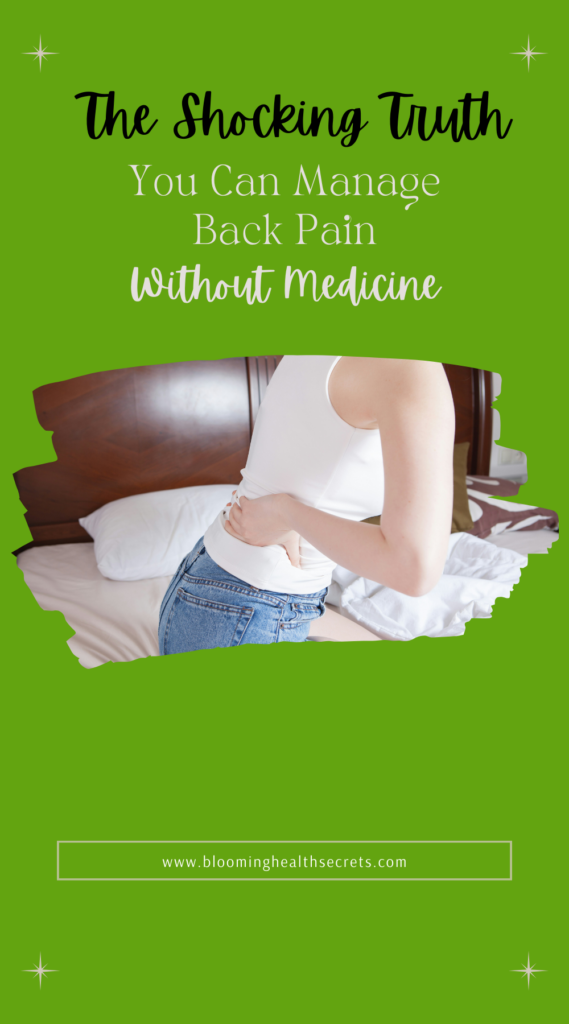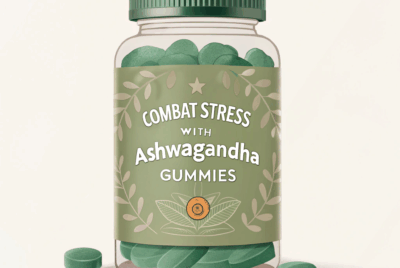How to Relieve Back Pain Fast at Home: Your Go-To Guide
Are you tired of being side-lined by nagging back pain? Whether it’s a dull ache or sharp discomfort, back pain can significantly impact your daily activities and quality of life. But fear not! In this comprehensive guide, we’ll explore effective strategies to help you find relief from back pain quickly and comfortably within the confines of your home. From simple stretches to lifestyle adjustments, we’ve got you covered. Let’s dive in to learn how to relieve back pain fast at home.
Understanding Back Pain: Identifying the Culprit
Before we delve into remedies, let’s briefly understand the common causes of back pain:
- Muscle Strain:
Overexertion, poor posture, or sudden movements can strain the muscles and ligaments in your back, leading to discomfort. - Herniated Disc:
When the soft cushion-like discs between your vertebrae protrude or rupture, it can irritate nearby nerves and cause pain, numbness, or weakness. - Degenerative Conditions:
Conditions such as osteoarthritis, spinal stenosis, or degenerative disc disease can contribute to chronic back pain as we age.
Now that we’ve identified potential culprits, let’s explore ways to alleviate back pain quickly and effectively.
Immediate Relief Measures: Easing the Discomfort
When back pain strikes, these immediate relief measures can offer comfort and help alleviate discomfort:
- Apply Ice and Heat:
Alternating between ice packs and heating pads can help reduce inflammation and relax tense muscles. Apply ice for the first 48 hours after an injury, then switch to heat to soothe soreness. - Practice Gentle Stretching:
Perform gentle stretches to loosen tight muscles and improve flexibility. Focus on stretches that target the back, hamstrings, and hip flexors to alleviate tension and promote relaxation. - Maintain Proper Posture:
Pay attention to your posture throughout the day, whether sitting, standing, or lifting objects. Avoid slouching or arching your back excessively to prevent strain and alleviate pressure on the spine. - Take Over-the-Counter Pain Relievers:
Nonsteroidal anti-inflammatory drugs (NSAIDs) such as ibuprofen or acetaminophen can help reduce pain and inflammation. Follow the recommended dosage instructions and consult your healthcare provider if necessary.
Home Remedies and Self-Care Practices: Long-Term Relief Strategies
In addition to immediate relief measures, incorporating these home remedies and self-care practices into your routine can provide long-term relief from back pain:
- Engage in Low-Impact Exercise:
Gentle activities such as walking, swimming, Qi Gong or yoga can help strengthen the muscles supporting your back and improve flexibility. Start slowly and gradually increase the intensity and duration of your workouts. - Maintain a Healthy Weight:
Excess weight can strain your back and exacerbate pain. Maintain a healthy weight through a balanced diet and regular exercise to reduce the load on your spine and alleviate pressure on your back muscles. - Practice Mindfulness and Relaxation Techniques:
Stress and tension can exacerbate back pain. Incorporate relaxation techniques such as deep breathing, meditation, or progressive muscle relaxation into your daily routine to promote relaxation and reduce stress levels. - Improve Sleep Quality:
Invest in a supportive mattress and pillows that promote proper spinal alignment and provide adequate support for your back. Additionally, establish a bedtime routine and create a comfortable sleep environment to ensure restorative sleep.
If you have tried everything to fix your back pain, shoulder pain, neck pain or arthritis, but nothing worked in the long run…
Then you’ll want to hear about this incredible pain fix.
Fortunately, there’s an easy way to fix 90% of back pain and arthritis cases.
It’s up to 7X more effective than any addictive painkillers, dangerous back surgeries… or YouTube exercises…
This revolutionary at-home method blocks the pain nerve fibers, instantly reduces inflammation and swelling and promotes tissue repair, healing any damaged part of your body – spine, knee, hips or any cartilage or strained muscle.
77,383 people who have used it have seen their pain levels reduced by 90% almost instantly…
They can now bend down, reach up and move around freely, feeling confident and capable of every movement.
Like Christine M, from Seattle, who says: “I almost went for a $34,000 hip replacement, but then I found out about this. All I have to say is this fix has LITERALLY SAVED MY LIFE, MY JOB AND MY MARRIAGE!”
Get all the details here:

Seeking Professional Help: When to Consult a Healthcare Provider
While home remedies can provide relief for mild to moderate back pain, it’s essential to seek medical attention if you experience:
- Persistent or severe back pain that does not improve with self-care measures
- Pain that radiates down your legs or causes numbness or weakness
- Loss of bowel or bladder control
- Fever, unexplained weight loss, or other concerning symptoms
Your healthcare provider can evaluate your condition, recommend appropriate treatment options, and address any underlying issues contributing to your back pain.
In Summary: Taking Charge of Your Back Health
In conclusion, back pain can be a debilitating condition that interferes with your daily life.
However, by incorporating simple lifestyle adjustments, practicing self-care strategies, and seeking timely medical attention when needed, you can effectively manage and alleviate back pain at home.
Remember to prioritize proper posture, regular exercise, and stress management to support a healthy spine and enjoy a pain-free life.
Frequently Asked Questions (FAQs) About How To Relieve Back Pain Fast At Home:
- Are there specific exercises that can help relieve back pain?
Yes, exercises such as pelvic tilts, cat-cow stretches, and hamstring stretches can help alleviate back pain by improving flexibility and strengthening core muscles. However, it’s essential to consult with a healthcare provider or physical therapist before starting any exercise program. - Can dietary changes help alleviate back pain?
While specific dietary changes may not directly alleviate back pain, maintaining a healthy weight through a balanced diet can reduce strain on the spine and support overall back health. Additionally, consuming anti-inflammatory foods such as fruits, vegetables, and omega-3 fatty acids may help reduce inflammation and alleviate pain. - Is it okay to use a back brace for back pain relief?
Back braces can provide temporary support and stability for the spine, especially during activities that exacerbate back pain. However, it’s essential to use a back brace under the guidance of a healthcare provider, as prolonged use may weaken the back muscles and lead to dependence on the brace. - What are some ergonomic tips on how to relieve back pain fast at home?
To prevent back pain at home, ensure that your workspace, furniture, and daily activities are ergonomically designed to promote proper posture and spinal alignment. Use supportive chairs with adjustable lumbar support, maintain neutral spine alignment while sitting and standing, and avoid prolonged periods of sitting or standing in one position. - Can stress exacerbate back pain?
Yes, stress and tension can contribute to muscle tension and exacerbate back pain. Practicing stress-reduction techniques such as deep breathing, meditation, and relaxation exercises can help alleviate stress and promote relaxation, thereby reducing back pain.
Some scientific research or comprehensive reviews related to relieving back pain:
- The Lancet Low Back Pain Series (2018):
This comprehensive review, published in The Lancet, highlighted the global burden of low back pain and emphasized the need for evidence-based management strategies. The series provided insights into the effectiveness of various treatments, including exercise therapy, manual therapy, and cognitive behavioral therapy, in alleviating back pain and improving function. - The Cochrane Review on Exercise Therapy for Chronic Low Back Pain (2016):
This systematic review by the Cochrane Collaboration evaluated the effectiveness of exercise therapy for chronic low back pain. The review concluded that exercise therapy, including aerobic, strengthening, and flexibility exercises, was beneficial for reducing pain and improving function in individuals with chronic low back pain. - The National Institute for Health and Care Excellence (NICE) Guidelines on Low Back Pain and Sciatica (2016):
NICE guidelines provide evidence-based recommendations for the management of low back pain and sciatica. The guidelines emphasize the importance of self-management strategies, including exercise, physical activity, and manual therapy, as first-line treatments for acute and chronic back pain. - The Back in Action Trial (2018):
This randomized controlled trial evaluated the effectiveness of a community-based exercise program for individuals with chronic low back pain. The trial found that participants who participated in the exercise program experienced significant improvements in pain, disability, and quality of life compared to those in the control group. - The Spine Patient Outcomes Research Trial (SPORT) (2006):
SPORT is one of the largest clinical trials comparing surgical and nonsurgical treatments for spinal disorders, including low back pain. The trial found that while surgery may provide faster relief of symptoms in some cases, nonsurgical treatments such as physical therapy and exercise were equally effective in the long term for most patients. - The Australian Acute Musculoskeletal Pain Guidelines (2019):
These evidence-based guidelines provide recommendations for the management of acute musculoskeletal pain, including low back pain. The guidelines emphasize the importance of early education, reassurance, and self-management strategies, such as staying active and avoiding bed rest, for individuals with acute back pain. - The British Medical Journal (BMJ) Clinical Review on Non-Specific Low Back Pain (2019):
This clinical review provides an overview of the assessment and management of non-specific low back pain in primary care settings. The review highlights the limited role of imaging and pharmacological treatments and emphasizes the importance of patient education, exercise, and self-management strategies. - The European Guidelines for the Management of Chronic Non-Specific Low Back Pain (2016):
These multidisciplinary guidelines provide recommendations for the management of chronic non-specific low back pain in primary and secondary care settings. The guidelines emphasize the importance of a biopsychosocial approach, including physical, psychological, and social factors, in the assessment and management of chronic back pain. - The American College of Physicians (ACP) Clinical Practice Guideline on Non-Invasive Treatments for Acute, Subacute, and Chronic Low Back Pain (2017):
This clinical practice guideline provides evidence-based recommendations for the management of low back pain. The guideline recommends non-pharmacological treatments, including exercise, spinal manipulation, and acupuncture, as first-line options for most patients with acute, subacute, or chronic low back pain. - The Global Spine Care Initiative (GSCI):
The GSCI is a multinational collaborative effort that aims to improve spine care worldwide. The initiative includes evidence-based recommendations for the prevention, assessment, and management of spinal disorders, including low back pain, across different healthcare settings and resource levels.
These studies and guidelines provide valuable insights into the assessment, management, and prevention of back pain, informing evidence-based approaches to alleviate discomfort and improve quality of life for individuals with back pain.





